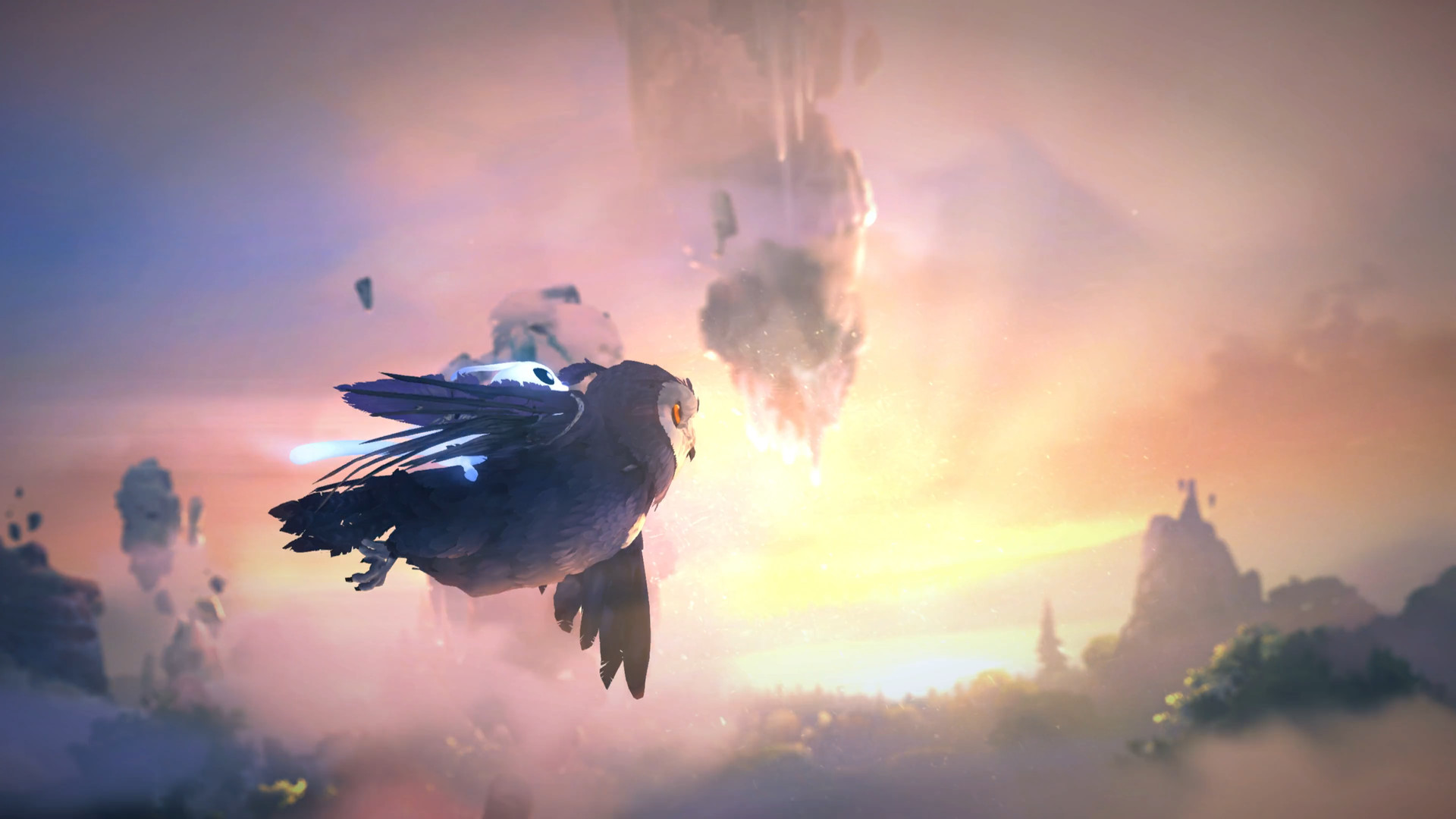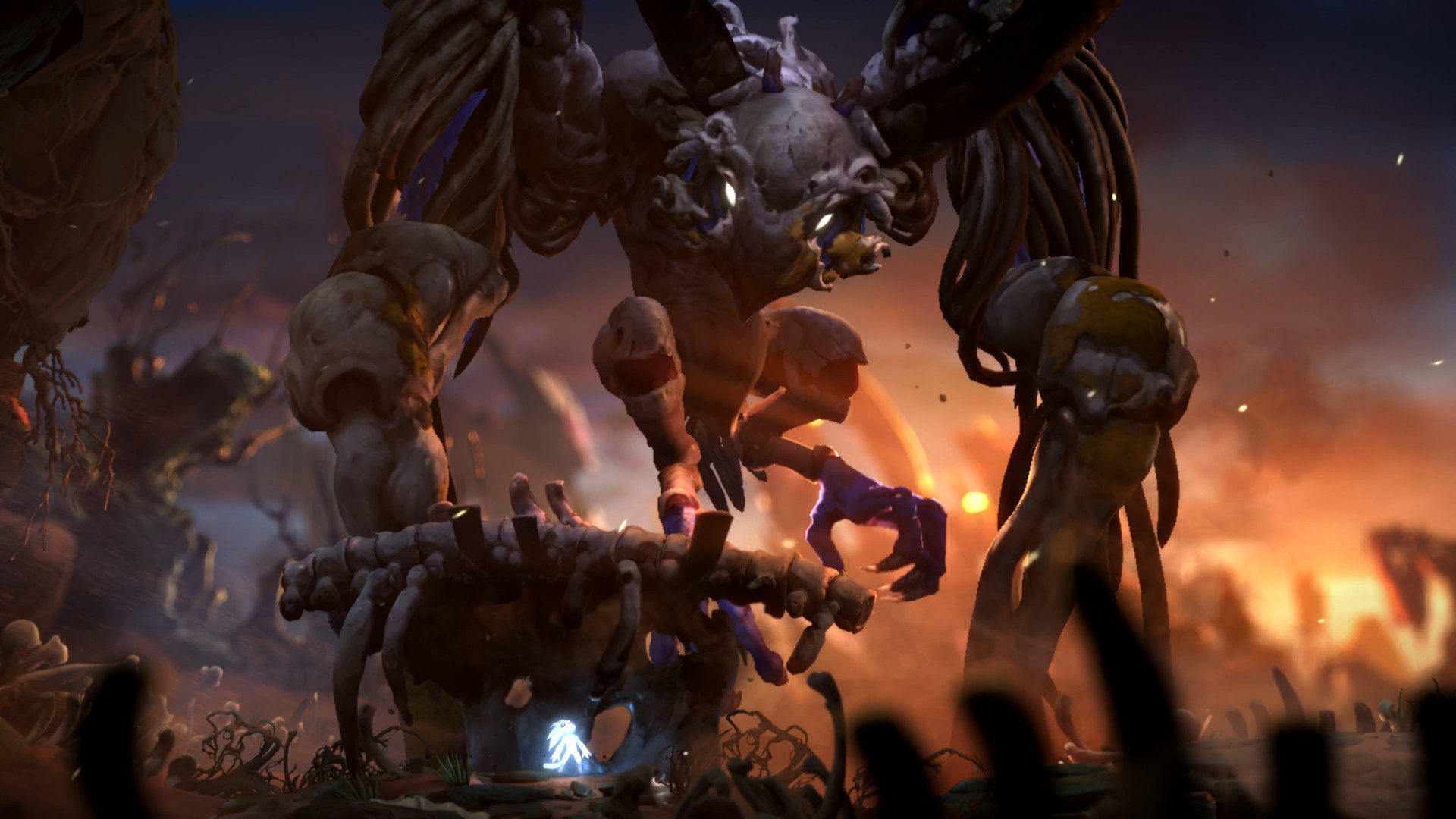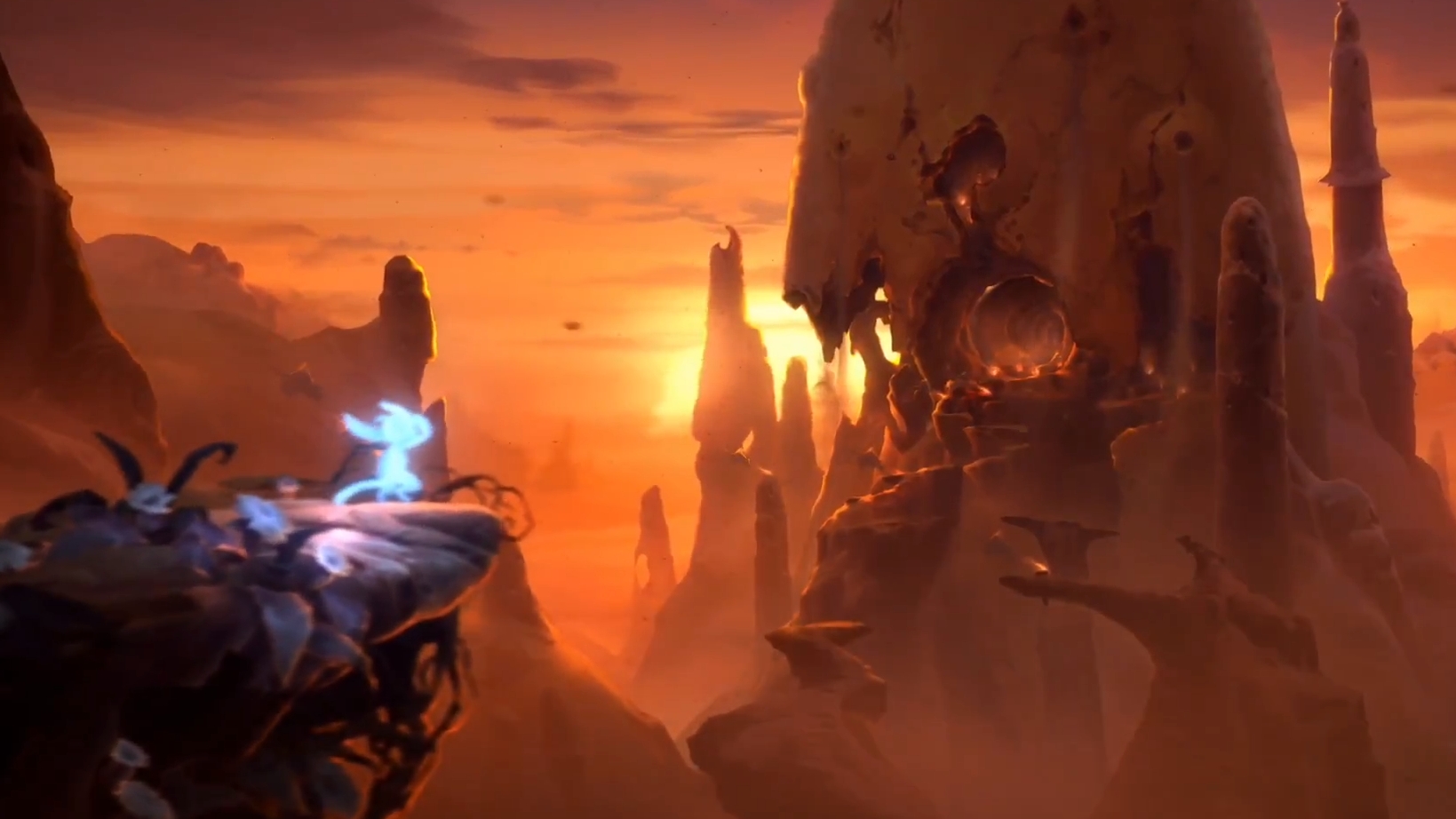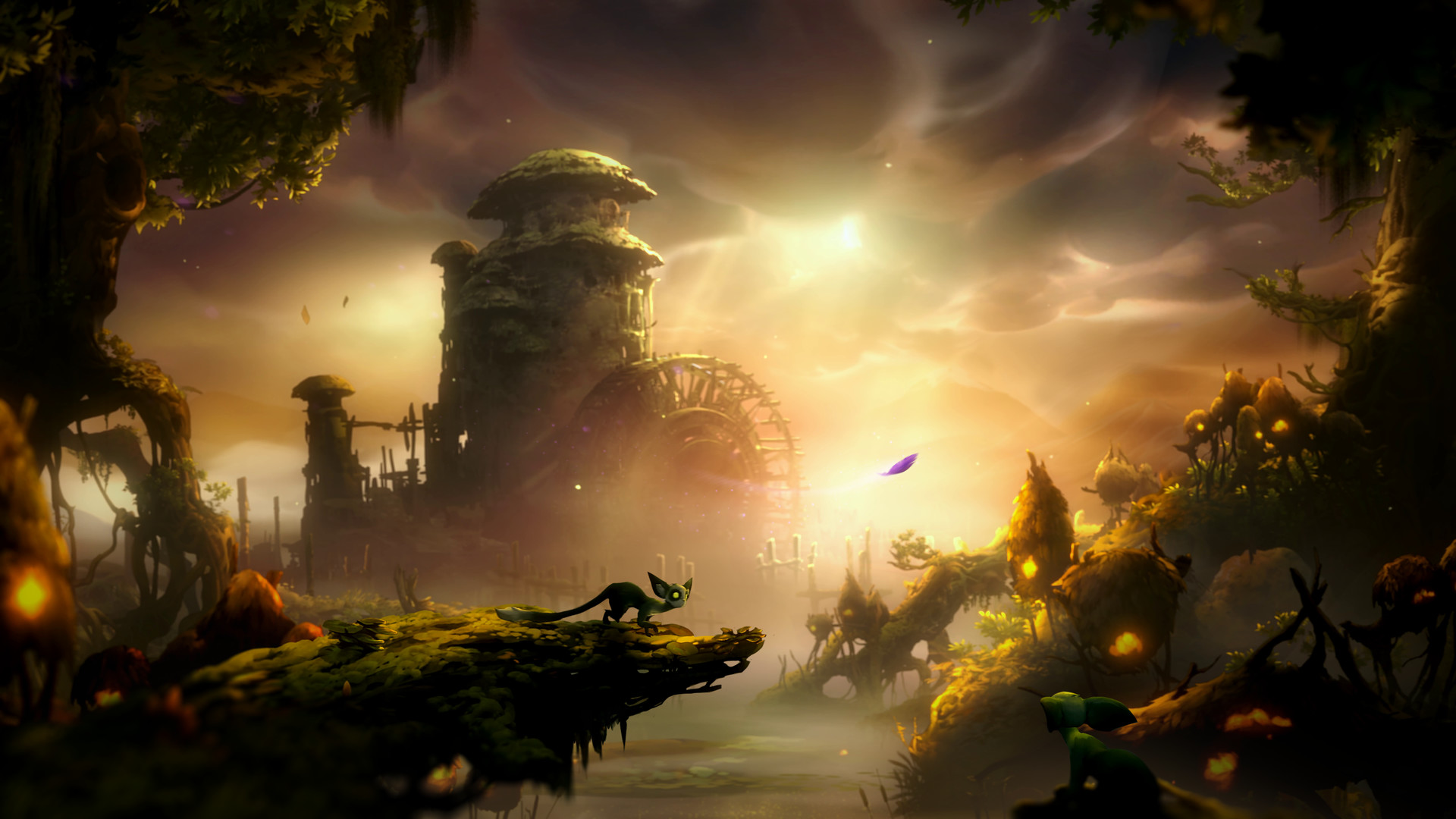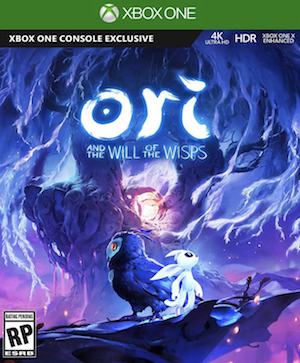
In the resurgent genre of Metroidvanias, 2015’s beautiful and tightly designed Ori and the Blind Forest stands as one of the best releases in recent memory. With Ori and the Will of the Wisps, developers Moon Studios have set out to do what all developers should do with any sequel, and make a game that is even bigger and better- and they have resoundingly succeeded on all fronts. Will of the Wisps takes the biggest strengths of its predecessor and hones them even further to the point of perfection, and at the same time introduces significant improvements to the aspects that did not work so well in the first game. The result is a startlingly excellent game, and one that will go down as one of the best this genre has ever delivered.
Like Blind Forest, simply moving around is an absolute joy in Will of the Wisps. Platforming is as tight as ever, and it’s bolstered by the level design constantly introducing new wrinkles and elements for you to contend with, forcing you to think about using your moveset in new ways on a near-constant basis. Will of the Wisps’ platforming also reaches the heights of its predecessor – and then surpasses them – very quickly, with the game handing you all your abilities from the first game quite freely in just the first few hours. Though it starts out with the simplest of mechanics, it doesn’t take long before you’re weaving together a complex web of jumps, dashes, avoiding environmental hazards, and more to make your way around levels. Fast, tight, and fluid movement was one of Ori and the Blind Forest’s biggest strengths, and its sequel is well aware of that fact, having cranked it all up to eleven.
The tight platforming also goes hand-in-hand with exploration, which is a core part of any Metroidvania game- and being the expertly crafted Metroidvania title that Will of the Wisps is, exploration is always hugely rewarding. The fluid movement means that you’re always ready and willing to go off the beaten path, which is aided by how well-designed each corner and crevice of the map is. The rewards you get for your exploration also always bring with them a rush of dopamine, and always justify the effort that goes into getting to them. Finding a hidden nook in a wall somewhere might lead you to a nice cache of currency that you can use for progression purposes, while getting through platforming gauntlets might lead you to meatier rewards. As such, the rewards and the journey of getting to those rewards are both always equally satisfying.
"With Ori and the Will of the Wisps, developers Moon Studios have set out to do what all developers should do with any sequel, and make a game that is even bigger and better- and they have resoundingly succeeded on all fronts."
Level design impresses on a larger scale as well. In spite of being much larger than the map in the first game, Ori and the Will of the Wisp’s map doesn’t skimp on quality, and instead delivers on the diversity front in droves. From deserts and sparkling pools to frozen mountains and dilapidated forests, there’s a huge amount of environmental variety in the game, which translates to variety in gameplay mechanics as well.
Each location brings its own set of threats and dangers to deal with, its own set of roadblocks and challenges, which means that each new area you visit feels significantly different from the others in tone, atmosphere, and so much more. Best of all, in spite of being so unique, they all feel like part of a single, larger, cohesive world, with each area blending into all the others very believably and organically. Not only does this stand as a testament to the game’s incredible visual design, it also adds immensely to things like world-building and environmental storytelling.
Storytelling was, of course, a crucial element in Ori and the Blind Forest, and for the most part, Will of the Wisps stands toe-to-toe with its predecessor. The earlier hours of the game lack the laser-sharp focus of the first game’s narrative- it starts out with a simple objective of re-uniting with Ku after you get separated in Niwen, a strange and dying land, and a clearer end-goal doesn’t come into play until you’re a few hours into the game.
At that point, Ori and the Will of the Wisps settles into a structure that fans of the first game will be more familiar with, and the larger narrative revelations start coming in with greater frequency. There’s a ton of hard-hitting moments with great emotional resonance in here. From moments involving the main characters that shape the narrative early on, to smaller, more isolated stories restricted to secondary players in the story, Will of the Wisps keeps hitting you with truly affecting developments, and they’re all delivered with great aplomb, backed by excellent, swelling music that never fails to hit an emotional beat.
"In spite of being much larger than the map in the first game, Ori and the Will of the Wisp’s map doesn’t skimp on quality, and instead delivers on the diversity front in droves. From deserts and sparkling pools to frozen mountains and dilapidated forests, there’s a huge amount of environmental variety in the game, which translates to variety in gameplay mechanics as well."
Those secondary characters are something that Blind Forest was lacking in to a great extent. Unlike Nibel though, Niwen is home to lots of creatures that act as NPCs, and their addition introduces more improvements than one might expect. Thanks to excellently and succinctly written dialog, each of the NPCs you run into has an endearing personality. From a giant frog-like being with moss growing over his face, to the adorable monkey-like creatures known as Moki, to a map-maker who you encounter on multiple occasions, every character in Niwen is a valuable addition to the story, and to varying extents, each and every one of them contributes to the game’s strengths in world-building and storytelling.
For anyone who’s played Ori and the Blind Forest, though, it’s not much of a surprise that Will of the Wisps excels in things such as map design, visual design, platforming, and storytelling. What will come as a bit of a shock to the system is just how radically better the combat is this time around. Combat in Blind Forest was a dull affair at the best of times, and its shallow and repetitive nature stood in stark contrast to the impeccable quality of other aspects of the game. Ori and the Will of the Wisps rights those wrongs, and ensures that combat can proudly stand in the company of the game’s other accomplishments.
The biggest factor that contributes to that success is the fact that you now have access to actual weapons- and quite a few of them, at that. From weapons that allow you to unleash bursts of quick attacks, to those that are slower but deal much more damage, to those you can use from a distance, there’s quite a few of these in Ori and the Will of the Wisps. Each of them feels appropriately unique from each other, and each feels great to use, animated expertly and landing with punchy impact. You can equip three of these at a time, with one each assigned to a face button, while changing what you have equipped is also a very smooth and quick process- you hold down the left trigger to pause the action and quickly select the weapon you want from a radial wheel.
As such, mixing and matching various different weapons in combat to counter unique threats is easy and seamless. A decent amount of enemy variety also encourages you to keep doing that- some enemies might prefer to stay out of reach, while others might like to get up close and personal, while others still might pose different threats with chaotic and erratic attacks. Mixing and matching these weapons while also using Ori’s suite of traversal abilities is what defines combat, especially when you’re faced with harder foes or a number of enemies at once, and it is an absolute blast. Not only does it feel great from a mechanical perspective, it also boasts copious amounts of visual flair. One-on-one encounters against some of the smaller enemies do tend to be a little button mash-y even now, but the best of the best encounters can look like bright and flashy dances, and these are the ones that will stay with you the longest.
"Combat in Blind Forest was a dull affair at the best of times, and its shallow and repetitive nature stood in stark contrast to the impeccable quality of other aspects of the game. Ori and the Will of the Wisps rights those wrongs, and ensures that combat can proudly stand in the company of the game’s other accomplishments. "
The part of Ori and the Will of the Wisps that benefits the most from the new and improved combat system is, unsurprisingly, the boss fights. There are quite a few of these in the game, from mini-bosses to larger set-piece encounters, and all of these – the latter, especially – are a treat, combining great design, challenge, and combat to deliver memorable encounters. Surely, they’re a huge step-up over the first game’s boss fights. Escape sequences make a return as well, and these, too, have seen significant improvements. For the most part, the artificial difficulty spikes and arbitrary requirements they imposed on you in the first game have been ironed out, and they’re now as thrilling to play through as they are to look at.
Another aspect that’s been completely reworked in Ori and the Will of the Wisps is progression. Dropping the skill tree of its predecessor completely, Will of the Wisps introduces a system that hews much more closely to the Charms in Hollow Knight. Scattered throughout the world are Shards – many of which can also be purchased – and they offer various unique advantages. One might allow you to stick to walls to make platforming easier, while another might give you additional health. If you’re feeling particularly confident, you can equip a Shard that lets you deal significantly more damage at the cost of also taking greater damage, but if you want to play things safer, you can equip a Shard that makes you more resilient- or you can equip both together and try and negate the first one’s negative effects.
With nearly three dozen Shards to find and use – which also greatly incentivizes exploration – Ori and the Will of the Wisps introduces a ton of accessibility, giving you a lot of options in how you want to approach any given situation. Each of these Shards can also be upgraded, often multiple times, while you can also seek out and finish combat trials to increase the number of Shards you can equip at a time. Needless to say, progression in Will of the Wisps is dense and complex, and together with its vastly improved and varied combat, it introduces something I’d never thought possible in the first game- actual, meaningful build variety.
This is also a much meatier package than its predecessor. The main story is about twice as long as the first game, which makes it a pretty full-featured experience as it is, but there’s also a lot more optional content to dive into. Thanks to a bigger map, there’s a lot more room for exploration, which, as I’ve mentioned, is extremely rewarding. Then there are those NPCs I spoke of earlier, who can occasionally hand out side quests, which are also consistently well-designed and worth tackling, either for the rewards they lead to or the narrative context they add to the world and the side characters.
"Progression in Will of the Wisps is dense and complex, and together with its vastly improved and varied combat, it introduces something I’d never thought possible in the first game- actual, meaningful build variety. "
Ori and the Will of the Wisps also has a hub area of sorts, a safe haven from the creeping dangers of the game’s world where the friendlier residents of Niwen all band together to build up a safe haven. Not only is this location just a joy to walk around and simply exist in while you converse with various NPCs, you can also slowly build it up and make it better by looking for pieces of ore scattered throughout the map and using those to help build improvements. There’s also seeds to find all over the map that contribute toward this, too, and seeing the area come together and grow and expand as a direct result of your efforts is extremely gratifying.
One area where Ori and the Will of the Wisps does have some noticeable issues is the technical side of things. The visuals and the art design are excellent, but the game’s performance is a bit inconsistent. I played the game on an Xbox One X, but there were moments when it would drop frames or suddenly freeze for a couple of seconds. Thankfully, none of this affected gameplay all that much, and the freezes and frame rate drops would usually happen either immediately after I’d fast travelled or during cutscenes. Moon Studios are also working on a day one patch that will supposedly iron out these issues, so here’s hoping that works as intended.
Ori and the Will of the Wisps’ shortcomings are few and – for the most part – negligible. The game’s brilliance smacks you in the face right from the get go, and it doesn’t let up until the very end. Nearly every moment is finely crafted, nearly every nook and cranny lovingly designed. With Ori and the Will of the Wisps, Moon Studios have realized the full potential of their debut title, and entered the upper echelons of Metroidvania history.
This game was reviewed on the Xbox One.
Fast, fluid movement; Tight platforming; A large map that is full of varied locations; Rewarding exploration; Emotionally resonant story; Excellent music; Beautiful art design; Radically improved combat with various meaningfully different weapons; Memorable boss fights; Reworked progression system offers a surprising amount of depth; Lots of engaging optional content; A new hub-like area that is a joy to exist in and upgrade.
Combat can still occasionally feel a bit button mash-y; Some technical issues.









